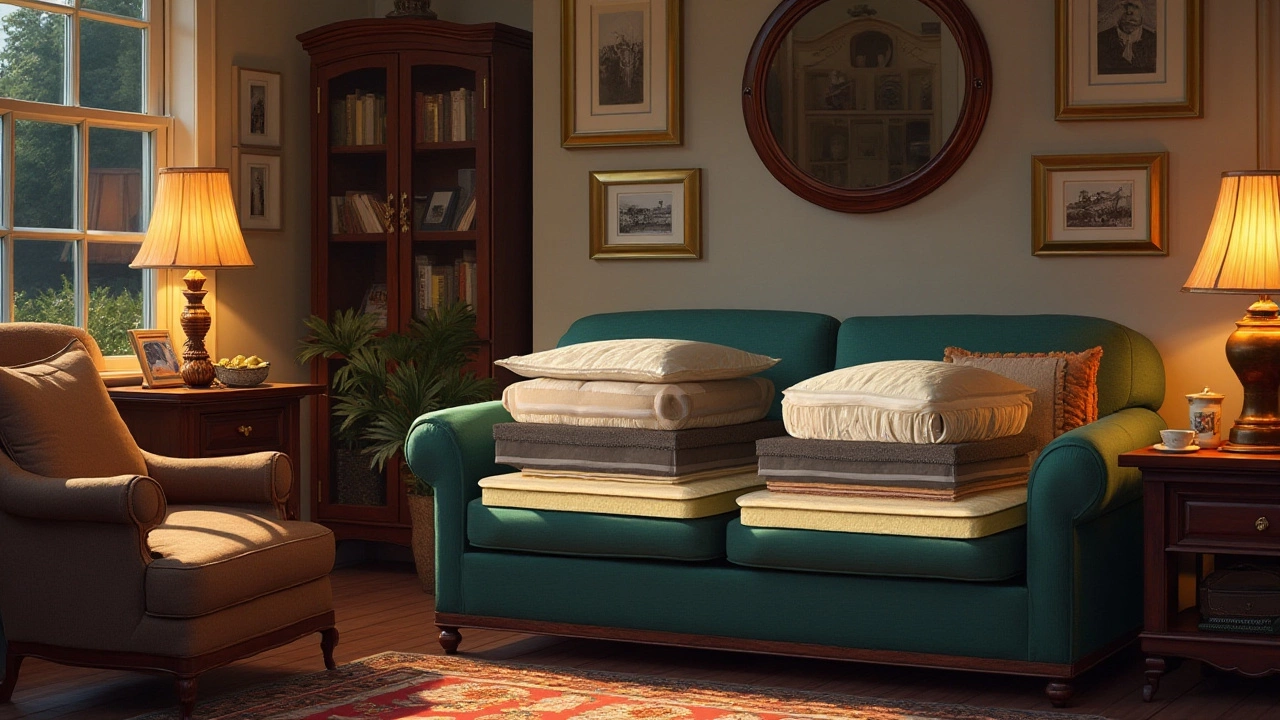Furniture Foam: What It Is and Why It Matters
Furniture foam is the soft material inside sofas, chairs, mattresses and many other pieces you sit on. It gives the seat its shape and makes it feel comfy. Not all foam is the same – density, firmness and durability can change a lot. Knowing the basics helps you avoid a saggy couch or an uncomfortable chair.
Types of Furniture Foam
The most common foams you’ll see are memory foam, high‑density polyurethane, and latex foam. Memory foam hugs your body and is great for beds, but it can feel too soft for a dining chair. High‑density polyurethane is the workhorse – it holds its shape longer and works well in sofas and office chairs. Latex foam feels bouncy, stays cool and lasts a long time, but it usually costs more.
There are also specialty foams like gel‑infused foam that tries to keep heat down, and open‑cell foam that breathes better. Some manufacturers mix two or three types in one cushion to balance comfort and support. When you see a product description that mentions “dual‑density” or “layered foam,” it means the maker is trying to give you a softer top layer and a firmer base.
How to Choose the Right Foam for Your Home
First, think about how you’ll use the piece. A sofa you flop on after work needs a firmer core to keep its shape, while a guest chair that gets occasional use can be softer. Next, check the foam density – numbers around 30‑35 kg/m³ are standard for sofas, whereas 20‑25 kg/m³ is common for lightweight chairs. Higher density usually means a longer lifespan, but it also feels firmer.
Second, test the firmness. If you can, sit on the furniture in the store and notice how it feels after a few minutes. Does it sink too deep? Does it bounce back when you stand up? Those clues tell you if the foam is right for you. If you’re buying online, look for detailed specs and read reviews that mention “sagging” or “maintains shape.”
Third, consider the cover material. A breathable fabric like cotton or linen lets the foam stay cool, while a heavy vinyl cover can trap heat and make the foam feel softer than it is. Matching the cushion cover to the foam type can improve comfort and durability.
Finally, think about budget. You don’t need the most expensive foam for a budget chair, but skimping on a sofa can lead to early wear. A good rule of thumb is to spend a bit more on the foam in pieces you use daily.
Once you have the right foam, take care of it. Rotate cushions every few months to spread wear evenly. If a cushion gets a stain, clean it quickly with a mild soap and let it air dry. Avoid exposing foam to direct sunlight for long periods, as UV light can break it down.Many homeowners also add a foam topper to mattresses or replace old sofa cushions with new foam for a fresh feel. It’s a cheap way to upgrade comfort without buying new furniture.
At First Choice Flooring Solutions we understand how important the right foam is for a cozy home. Our team can help you pick the perfect foam cushions for your living room or bedroom, and we can even arrange a quick installation. Contact us for advice, and turn any seat into a favorite spot.
What Type of Foam Does La-Z-Boy Use for Sofas?
- Gavin Whitaker
- |
- |
- 0
La-Z-Boy, a brand synonymous with comfort and quality, makes its sofas with a variety of foams for the cushions. These foams are chosen for durability, support, and comfort. Understanding the types of foams used can help consumers make informed decisions about their purchases. This information is valuable for those seeking long-lasting and comfortable seating solutions.
View more